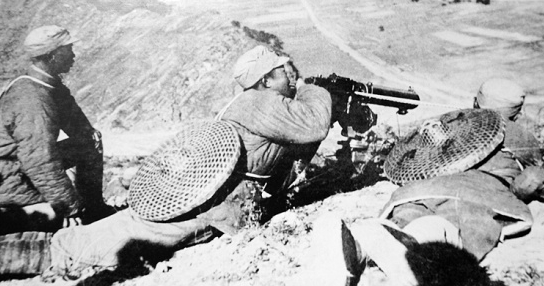Q&A: What was the first major victory the Chinese military won during the War of Resistance?
(chinadaily.com.cn) Updated: 2015-10-30 15:29Q: What was the first major victory the Chinese military won during the War of Resistance?
A: In mid-September of 1937, the 5th Division of the Japanese North China Area Army rapidly approached the Inner Great Wall. At the same time, in coordination with the 5th Division, the main force of the Chahar Expeditionary Force of the Kwantung Army set off on a southward offensive from Datong. The Japanese attempted to break through Pingxingguan and eliminate the Chinese troops in the 2nd War Zone so as to lend support to the operations of the main force of the North China Area Army along the Beiping-Hankou and Tianjin-Pukou railways.

In light of this, Yen Hsi-shan, commander of the Chinese troops of the 2nd War Zone, decided to organize a defense covering Pingxingguan, Yanmenguan, and Shenchi along the Inner Great Wall, attempting to rely on the Great Wall to stop the Japanese troops from entering the interior of Shanxi.
In order to coordinate with the operations of the friendly armies, on September 24, the Eighth Route Army's 115th Division Commander Lin Biao and Deputy Commander NieRongzhen decided to set up an ambush to the northeast of Pingxingguan. The ambush was to take place on a 13-kilometer section of a highway running from Guangou via Qiaogou and on to Donghenan Town, the intention being to stop the advancing Japanese troops in a narrow valley. On the same day, the Independent Regiment of the 115th Division blocked several attacks by Japanese troops at Yaozhan between Laiyuan and Lingqiu counties.
At dawn on September 25, Japanese troops from the combat train of the 5th Division and the main force of the 21st Brigade moved westward on the Lingqiu-Pingxingguan Road, and by around 7am entered the trap set by the Eighth Route Army's 115th Division. Seizing the opportunity, the 115th Division launched its attack. The 685th Regiment took out the Japanese troops at the head of the force. The 687th Regiment then cut off the Japanese troops' route of retreat between Caijiayu and the village of Xigou. The 686th Regiment launched an assault at Qiaogou between Xiaozhai and Laoyemiao, forcing the Japanese troops into a narrow valley. During the battle, the Japanese troops who, only days earlier on September 22 had occupied Dongpaochi, tried to turn back to Laoyemiao to reinforce the Japanese forces there, but they were stopped in their tracks by the 685th Regiment of the Eighth Route Army. As the two sides were in close combat, there was nothing that the Japanese aircraft could do, and although the Japanese troops came back with repeated counter-attacks, they were beaten back by the 686th Regiment. Finally, with help from the 685th Regiment, the 686th Regiment wiped out all the remaining Japanese troops.
At the battle of Pingxingguan, the 115th Division sustained over 400 casualties, killed over 1,000 Japanese soldiers, and captured a large quantity of military supplies. This battle was the Chinese military's first major victory since the nationwide resistance had begun. On September 26 Chiang Kai-shek sent a message to offer his congratulations for the victory, saying "I am very pleased that a large number of Japanese bandits have been put down, and this shows our officers and soldiers have, regardless of danger, followed the order to defend our country."
This was also the first time the Eighth Route Army had successfully concentrated forces to ambush the Japanese forces. In shattering the myth that the Japanese were invincible, the battle greatly boosted the confidence of Chinese armed forces and civilians. It also strengthened the reputation of the Communist Party and the Eighth Route Army, and drew praise from the international community.




